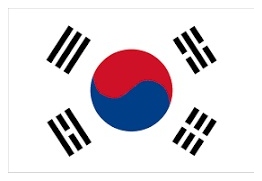The Significance of Country Flags & Symbols
This article overviews vexillology and explores the importance of flags, patches, and symbols in representing national identity, culture, and history.
The Fascinating World of Vexillology and Symbolism
Overview of Vexillogy and Its Significance

Vexillology, the scientific study of flags, delves deep into the intricate analysis of various aspects of flags, ranging from their types and forms to their rich history, symbolism, and multifaceted functions.
It provides a unique lens through which flags are not merely seen as colorful pieces of cloth, but as potent symbols that encapsulate the essence of nations, states, cities and groups. Flags symbolize a country's ethos, communicating unity, pride, and identity to its citizens and the global community.
As an academic discipline, vexillology allows individuals to decode the nuanced meanings behind flags, shedding light on the cultural, historical, and social significance embedded within these symbolic representations.
Moreover, notable figures in vexillology, such as Dr. Whitney Smith, have played pivotal roles in shaping the discourse around flags and their study. Dr. Smith's contribution, coining the term "vexillology" in the late 1950s, marked a significant milestone in formally recognizing flag studies as a scholarly pursuit.
By establishing the groundwork for the systematic examination of flags, vexillologists like Dr. Smith have paved the way for a comprehensive understanding of how these symbols influence patriotism, historical narratives, and societal values.
In essence, vexillology serves as a gateway to unraveling the layers of meaning woven into the fabric of flags, highlighting their profound impact on individuals and communities worldwide.
Evolution of Flags

The evolution of flags is a fascinating journey that showcases their transformation from basic military symbols to powerful representations of national identity and unity. Initially used for practical purposes on battlefields, flags have transcended their original role to become iconic symbols that evoke pride and solidarity among citizens.
For instance, the rainbow flag, created by Gilbert Baker in 1978 as a symbol of LGBTQ+ pride, illustrates how flags can embody inclusivity and diversity, reflecting the evolving social landscape.
As flag design progresses, there is a notable shift towards embracing minimalism and adaptability to digital platforms without compromising their cultural significance.
This trend is exemplified by flags like the Japanese flag, characterized by a simple red circle on a white background, which conveys a profound cultural and historical narrative in a minimalist style. The ability of flags to evolve while preserving their core symbolism underscores their enduring relevance in contemporary society, where they serve as potent visual tools for expressing identity and values.
Significance of Flags in Identity and Culture
Flags hold a profound significance in shaping national identity and fostering a sense of unity among citizens. They are potent symbols encapsulating a country's rich history, cultural heritage, and collective aspirations. For example, the Indian flag's tricolor design, with saffron representing courage and sacrifice, white symbolizing truth and peace, and green signifying faith and chivalry, encapsulates the essence of India's diverse identity and unity.
Furthermore, flags transcend geographical boundaries and act as ambassadors of a nation's values and principles on the global stage. The iconic Union Jack of the United Kingdom, combined with the crosses of St. George, St. Andrew, and St. Patrick, represents the historical union of England, Scotland, and Ireland. This flag symbolizes unity, shared history, and mutual respect among the nations it represents, showcasing the intricate tapestry of identities within the United Kingdom.
In addition to their role in international diplomacy and national pride, flags are instrumental in cultural events and ceremonies, serving as focal points of reverence and celebration. The Japanese flag, known as the Nisshoki or Hinomaru, with its simple yet powerful red circle on a white background, is revered as a sun symbol and has deep spiritual and historical significance in Japanese culture. The flag's design embodies the nation's cultural roots and reverence for nature and the cosmos, reflecting the intricate relationship between Japan's past, present, and future aspirations.
Symbolism and Meaning Behind Flag Designs
Flag designs are not merely random patterns and colors but intentional representations of a nation's heritage and values. Each symbol embedded in a flag holds a significant meaning, often rooted in the history and ethos of the country it represents. For instance, the crescent moon and star on the flag of Turkey have historical ties to the Ottoman Empire and signify the nation's predominantly Muslim population. These symbols connect the present to the past, creating a visual link to the cultural narrative of a country.
Moreover, colors are crucial in flag design by conveying symbolism and emotion. The color red, commonly associated with courage and valor, can be found in numerous flags worldwide, symbolizing the bravery and strength of a nation's people. In contrast, blue often represents peace and stability, as seen in flags like the United Nations and various democratic countries. Understanding the significance of these colors provides insight into the values and aspirations of different nations, showcasing a spectrum of meanings that transcend linguistic barriers and resonate universally.
Utilization of Symbols

Symbols play a vital role in expressing and reflecting community values, beliefs, and identities.
The visual elements on flags serve as powerful instruments to convey distinct messages or affiliations, often embodying historical stories or cultural importance.
There are few more iconic flags than Canada! Canada's flag, featuring a red maple leaf, was adopted on February 15, 1965. Replacing the British Red Ensign, it was selected through a national design contest. The simple red and white design symbolizes peace and unity, with the maple leaf representing Canada's nature and environment.
It’s an enduring national symbol.
Another example of a wonderfully designed flag is South Korea. The Taegeukgi (the official name for the South Korean Flag) features a white background, a red and blue taegeuk circle, and four black trigrams. The white symbolizes purity and peace. The taegeuk represents the harmony of yin (blue) and yang (red), and the trigrams symbolize sky, earth, water, and fire.

Symbols in flag designs transcend mere decoration; they act as powerful visual cues for individuals to express allegiance, identity, and membership to specific groups.
These elements can evoke pride, solidarity, and a sense of belonging, encapsulating shared values and historical narratives.
Flags unite people under common causes and inspire collective action, making them vital tools for communication and representation in societies.
Notable Vexillologists and Their Contributions
Dr. Whitney Smith, often called the father of vexillology, played a pivotal role in establishing vexillology as a recognized discipline.
Another notable vexillologist, Graham Bartram, has garnered acclaim for his flag design and symbolism expertise. Bartram's research and publications have deepened our understanding of the intricate meanings behind flag elements and the art of designing flags that effectively convey messages and represent diverse identities. Through their dedicated efforts, both Smith and Bartram have expanded the knowledge base of vexillology and fostered a greater appreciation for the cultural and historical significance of flags worldwide.
Furthermore, the contributions of these vexillologists extend beyond academia. Smith and Bartram's work has influenced the design of national flags, regional banners, and even organizational emblems, emphasizing the importance of thoughtful symbolism and meaningful representation in flag creation. By studying the works and insights of these influential figures, scholars, enthusiasts, and designers continue to explore the rich tapestry of flag history, design principles, and symbolic meanings, driving the field of vexillology forward into new realms of discovery and appreciation.
/1004/site-assets/logo.png)
/1004/site-assets/phone.png)
/1004/site-assets/cart.png)
/1004/site-assets/dateseal.jpg)
/1004/site-assets/creditcards.png)